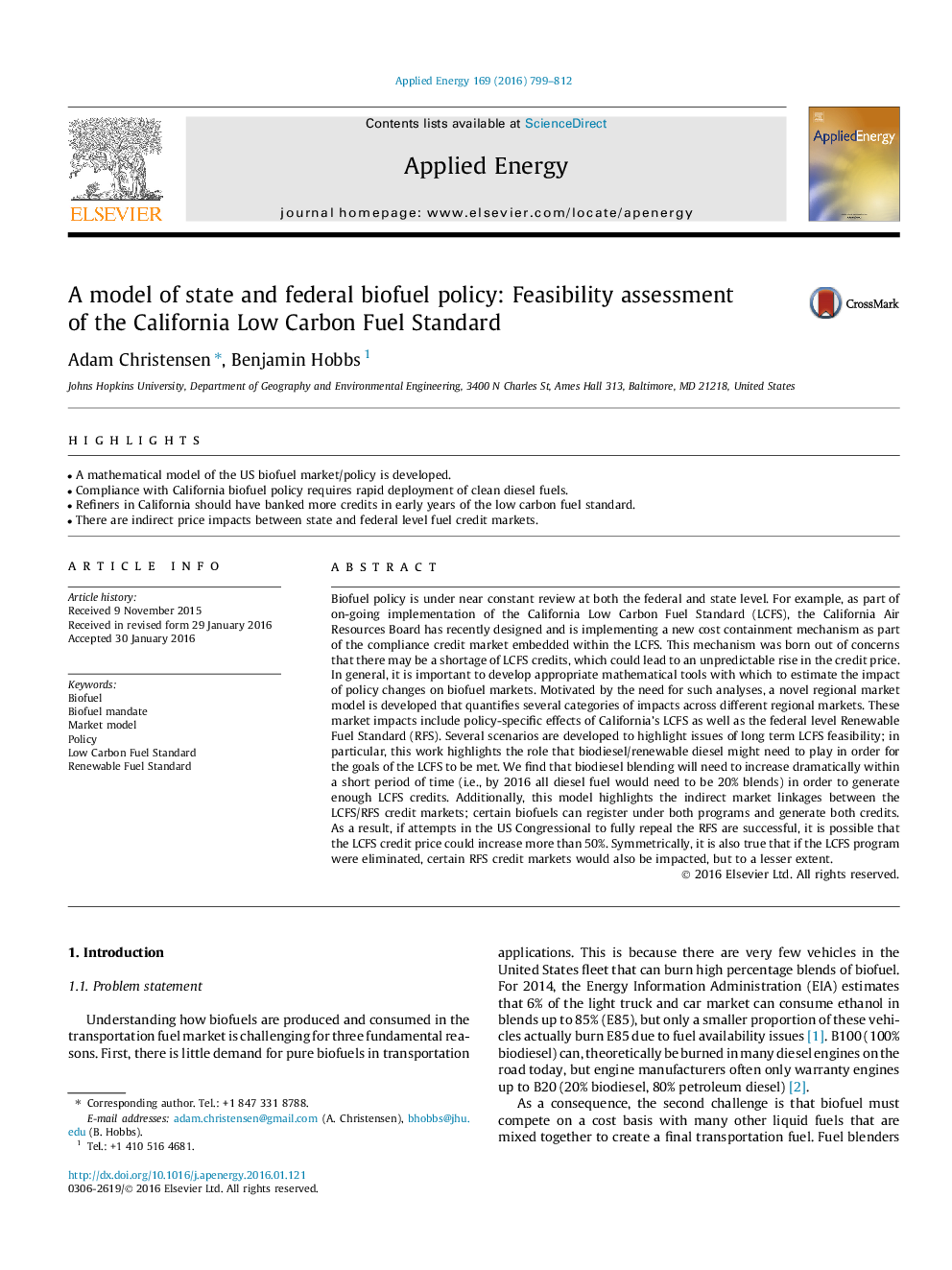| کد مقاله | کد نشریه | سال انتشار | مقاله انگلیسی | نسخه تمام متن |
|---|---|---|---|---|
| 6683640 | 501857 | 2016 | 14 صفحه PDF | دانلود رایگان |
عنوان انگلیسی مقاله ISI
A model of state and federal biofuel policy: Feasibility assessment of the California Low Carbon Fuel Standard
ترجمه فارسی عنوان
یک مدل سیاست سوخت زیستی دولت و فدرال: ارزیابی امکان سنجی استاندارد کربن کم کربن کالیفرنیا
دانلود مقاله + سفارش ترجمه
دانلود مقاله ISI انگلیسی
رایگان برای ایرانیان
کلمات کلیدی
سوخت های زیستی، دستور سوخت زیستی، مدل بازار، سیاست، استاندارد کربن کم استاندارد سوخت قابل بازیافت،
موضوعات مرتبط
مهندسی و علوم پایه
مهندسی انرژی
مهندسی انرژی و فناوری های برق
چکیده انگلیسی
Biofuel policy is under near constant review at both the federal and state level. For example, as part of on-going implementation of the California Low Carbon Fuel Standard (LCFS), the California Air Resources Board has recently designed and is implementing a new cost containment mechanism as part of the compliance credit market embedded within the LCFS. This mechanism was born out of concerns that there may be a shortage of LCFS credits, which could lead to an unpredictable rise in the credit price. In general, it is important to develop appropriate mathematical tools with which to estimate the impact of policy changes on biofuel markets. Motivated by the need for such analyses, a novel regional market model is developed that quantifies several categories of impacts across different regional markets. These market impacts include policy-specific effects of California's LCFS as well as the federal level Renewable Fuel Standard (RFS). Several scenarios are developed to highlight issues of long term LCFS feasibility; in particular, this work highlights the role that biodiesel/renewable diesel might need to play in order for the goals of the LCFS to be met. We find that biodiesel blending will need to increase dramatically within a short period of time (i.e., by 2016 all diesel fuel would need to be 20% blends) in order to generate enough LCFS credits. Additionally, this model highlights the indirect market linkages between the LCFS/RFS credit markets; certain biofuels can register under both programs and generate both credits. As a result, if attempts in the US Congressional to fully repeal the RFS are successful, it is possible that the LCFS credit price could increase more than 50%. Symmetrically, it is also true that if the LCFS program were eliminated, certain RFS credit markets would also be impacted, but to a lesser extent.
ناشر
Database: Elsevier - ScienceDirect (ساینس دایرکت)
Journal: Applied Energy - Volume 169, 1 May 2016, Pages 799-812
Journal: Applied Energy - Volume 169, 1 May 2016, Pages 799-812
نویسندگان
Adam Christensen, Benjamin Hobbs,
